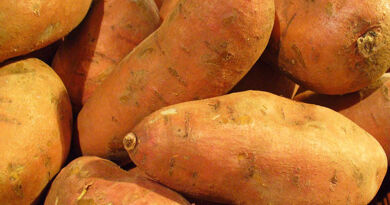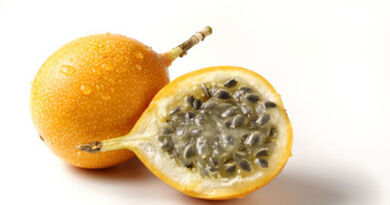Cassava
Cassava is a shrub with gnarled stems and tuberous roots, from the Euphorbiaceae family, of the genus Manihot (from the Brazilian word “Mandihocat”). It can reach from 1.50 m to 2 m high. Native to Brazil and probably all of tropical America, it was certainly introduced to our islands by their first known occupants, the Arawaks and especially the Caribbean, who made frequent expeditions in the Greater and Lesser Antilles, as well as on the continent. So this plant already existed in Guadeloupe and Martinique, in the early days of colonization. Here is what R.P. Du Tertre says in his “Natural History of the Antilles inhabited by the French. “Everyone is astonished in France, that in all the islands, it does not grow wheat and admires at the same time as men can live on a root bread, the juice of which is a poison that kills a man of one spoonful; and the savages, on the contrary, consider the French unhappy, because in their country there is no Cassava …
There are several kinds of Cassava We distinguish sweet cassava from bitter cassava for a long time, since it seems that the Caribbean already made this differentiation. If these two types can be transformed into flour and moussache, Sweet cassava can be eaten as vegetables. R.P. Du Tertre made a much broader distinction. According to him, there were six or seven kinds of Cassava, which the locals recognized in the following way: “by the color of the tails, the ribs of the leaves, or the bark of the root. Cassava violet has a bark on its root, the thickness of a quarter of a shield, of a strong brown violet; but the inside is snow white. This one makes the bread taste better, and lasts longer in the ground than the others. Cassava gray has wood bark and gray root, and is very uneven; for sometimes it brings in a lot, sometimes very little; the bread is not bad. Green Cassava, so called because of the greenness of its leaves, which are thick and greener than the others, brings a lot, it is never ten months to be good, and makes excellent bread; but it does not keep long in the ground. The white Cassava has the bark of whitish wood, that of its root, with the inside is yellow. It comes in six or seven months, it brings back a lot of roots, but they all resolve into water; so that even if the bread is yellow like gold, and very tasty, there is not enough, and few people do, it is only those who are in a hurry who have no Cassava planted, which plant it, to have it soon. There is a sort of fairly rare Cassava, which is called Kamanioc: it is so similar to white Cassava, that they can only be distinguished with difficulty. We cook it whole like potatoes, and we eat it without expressing its juice, and without causing any harm … ”
All this is very complicated, we will maintain the classification in Bitter cassava and Sweet cassava.
Bitter cassava They include in particular the Manihot utilissima Pohl or Manihot esculenta Crantz, which the Caribbean knew under the name of “Kière”. The tubers of these Cassava contain a toxic principle, manihotoxin, which, hydrolyzed by an enzyme, gives several products including hydrocyanic acid, true poison for humans. Fortunately, this acid disappears through washing and cooking. We already knew the toxicity of bitter cassava in the 17th century, as evidenced by the writings of the first chroniclers. “We consider this juice as a poison, not only for men, but also for animals that drink it or eat these roots before the juice is expressed,” wrote R.P. Du Tertre. Father Labat affirmed: “that it is not a harmful poison although it causes death; but that having too much substance, the stomachs of animals cannot digest it, and that they are suffocated. What appears in that the animals which die from it have not at all the altered noble parts, but only the swollen chest ”. (New trip to the French Islands of America – 1694). Recently, the following case was reported: “of a mother who cooked like yams what had been sold to her for sweet cassava but which was actually bitter cassava roots. Her three children, three, five and seven years old, who had eaten it, died and the autopsy revealed a hydrolysis of the blood, the red cells having become chocolate-colored, characteristic of the action of hydrocyanic acid. (France-Antilles, Tuesday July 4, 1978).
Counterpoisons By the 17th century, there were many counterpoisons, but their effectiveness remained questionable. R.P. Du Tertre recommended three remedies. The first consisted in making the patient drink olive oil with lukewarm water so that he vomited, which, according to him, gave good relief. The second remedy was to swallow a large amount of pineapple juice with a few drops of lemon juice. The third medication was to take the wood snake juice. Here is what Father Labat proposed: “The different experiences I have made of this juice have convinced me that in addition to this abundance of nourishing substance, part of its malignancy consists in its coldness which stops the circulation of blood, numbs the spirits and finally causes death without offending the noble parts of the animal: the reason on which I rely, is that the best remedy that has been found so far to save the lives of animals that have drunk it, is to excite in them violent movements by making them run as fast as possible, heating them by making them swallow the strongest brandy with theriac, after having made them swallow oil to excite them to reject what they took; in a word, by awakening the spirits, and putting the blood in movement ”.
Sweet cassava Called Camaniocs (or Can-cassava), Manihot Dulcis Pax, Manihot utilissima Crantz, Aïpi variety and other Camaniocs in our islands. They have the same general appearance as bitter cassava. In the former, however, the epidermis of the tuber is thick and easily detached; in the latter, it is very thin and adherent, hence the need for scratching. Camanioc is eaten boiled like other tubers.
Do you like the article ?
Please leave a review here.



